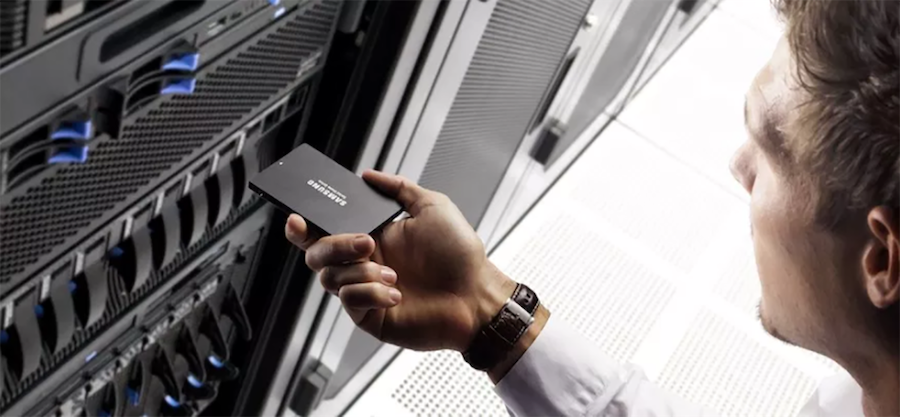While every business needs storage, there is no one-size-fits-all storage component or strategy. Some businesses have minimal storage capacity needs and can get by with on-site storage, while others are creating and storing so much data daily that equipping and managing a data center is a better option. What each company utilizes comes down to how much data its generating, how often that data is accessed and what work and applications it’s supporting.
Unfortunately, the wrong choice can lead to unhappy end users — those who deal with lag, errors and complete loss of data.
In recent years, solid state drives (SSDs) have emerged as a technology that helps small and medium-sized businesses (SMBs), as well as enterprise users, improve their storage. SSDs have characteristics that, depending on the connector option, SSDs are generally focused on either high capacity or high transfer speeds. In some cases, users can get both. Choosing the right option requires some introspection and an assessment of what you’re looking to do today and what your storage needs will be in the future.
Make the right connection
Before deciding which SSD to deploy, you’ll need to know exactly how it’ll be used, which will influence the type of data connector you’ll need. Data connectors are storage interfaces that connect drives to your system’s main processing bus.
How over-provisioning SSDs impacts performance
Get your free white paper on how over-provisioning of SSDs can improve memory performance. Download Now
Today, there are two commonly used options: SATA and M.2. Traditional hard drives found in most laptops, desktops and SMB servers use SATA connectors. M.2, which supports the non-volatile memory express (NVMe) standard, is emerging as a data center darling because it has several huge benefits. Most importantly, M.2 connectors can transfer data much faster than traditional SATA connections. Couple that feature with the fast SSD read/write speed, and it’s no wonder that NVMe drives are expected to perform five to seven times better than SATA SSDs and at 25 to 35 times the speed of your legacy-style spinning media.
SSD drives that use the M.2 connector, such as Samsung’s 983 DCT, which features sequential read/write speeds up to 3,000/1,400 MB/s and random read/write speeds up to 400/38K IOPS, are well-suited for applications or use cases that require fast data processing, high reliability and high Quality of Service (QoS). This includes workloads such as big data and analytics, artificial intelligence (AI), e-commerce, Internet of Things (IoT) and other real-time applications. Basically, anyone working with high-end graphics programs or doing complex data modeling and processing can benefit from SSD drives that feature the NVMe connector.
Don’t shun SATA
That’s not to say traditional SATA drives should be overlooked when it comes to your storage infrastructure. That could be a mistake — SATA drives are the workhorse of the data center. They give users the ability to add multiple terabytes of capacity to the data center at budget-conscious prices and are perfect for specific use cases. Samsung, in particular, has multiple SATA drives that have impressive capacity — 1TB, 2TB, 4TB and 8TB — and provide fast read/write speed.
These drives also feature trustworthy, hardware-based, full-disk encryption that helps ensure better security across the data center. Because of this, the drives are well-suited for a variety of uses including file serve, photo and video editing applications, content delivery and everyday computing needs.
For example, the Samsung 860 DCT comes in three capacity levels — 960 GB, 1,920 GB, and 3,840 GB. It was developed to sustain performance for applications with maximum sequential read speeds of 550 MB/s and maximum sequential write speeds of up to 520 MB/s.
No matter your storage needs, there is a Samsung SSD option that can handle your company’s data.
Find out more about Samsung’s data center SSD offerings by watching this video.








